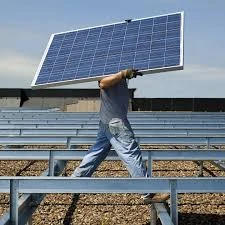Optimal Solar Panel Orientation for Maximum Efficiency
The Efficiency of Solar Panel Orientation Maximizing Energy Harvesting
In the quest for sustainable energy, solar panels have emerged as one of the most viable sources. However, their efficiency is heavily influenced by orientation—angle and direction relative to the sun. Understanding how to optimize solar panel orientation can significantly enhance energy generation, making it a critical consideration for both residential and commercial installations.
Solar panels work by converting sunlight into electricity through photovoltaic cells. The amount of sunlight captured depends on the orientation of the panels. Ideally, solar panels should face the sun directly to maximize exposure. In the Northern Hemisphere, south-facing panels generally capture the most sunlight throughout the day. Conversely, in the Southern Hemisphere, north-facing installations are preferred. The tilt angle also plays a crucial role in efficiency.
The Efficiency of Solar Panel Orientation Maximizing Energy Harvesting
To further enhance efficiency, tracking systems are becoming increasingly popular. These systems allow solar panels to follow the sun's path across the sky, optimizing exposure throughout the day. Single-axis trackers move panels from east to west, while dual-axis trackers can adjust both vertically and horizontally. Studies have shown that tracking systems can increase energy production by 25-35% compared to fixed installations, making them a worthy consideration in areas with significant sunlight.
solar panel orientation efficiency

However, the effectiveness of solar panel orientation is not solely dictated by sunlight. Environmental factors such as shading from nearby buildings, trees, or other obstacles can severely impact energy generation. Therefore, before installation, a thorough assessment of the site is necessary. Tools like solar pathfinders and software simulation can help determine the best placement and orientation for maximum exposure.
Furthermore, the angle and orientation are not static; as the sun’s position changes throughout the year, so too can the optimal settings for solar panels. Regular maintenance and adjustments can ensure that panels continue to perform efficiently. Homeowners and businesses should periodically assess their installations to adapt to any changes in their environment that could affect sunlight exposure.
Going beyond installation, integrating smart technology can also optimize solar panel performance. For example, systems that monitor weather conditions in real-time can adjust the orientation of the panels autonomously, ensuring they are always positioned for optimal sunlight capture.
In conclusion, the orientation and tilt of solar panels are crucial factors in maximizing their efficiency. By understanding the best practices for orientation, utilizing tracking systems, and maintaining environmental awareness, both homeowners and businesses can significantly boost their solar energy production. As the world shifts towards renewable energy, optimizing solar panel orientation will play a vital role in harnessing the sun's power effectively. Through careful planning and technology integration, we can make strides toward a more sustainable future powered by clean energy.
-
String Solar Inverter: The High-Efficiency Solution for Smart Solar EnergyNewsJul.14,2025
-
Revolutionizing Rooftop Energy with the Power of the Micro Solar InverterNewsJul.14,2025
-
Power Independence with Smart Off Grid Solar Inverter SolutionsNewsJul.14,2025
-
On Grid Solar Inverter: Powering the Future with Smart Grid IntegrationNewsJul.14,2025
-
Monocrystalline Solar Panels: High-Efficiency Power for the Future of Clean EnergyNewsJul.14,2025
-
Bifacial Solar Panel: A Smarter Investment for Next-Generation Energy SystemsNewsJul.14,2025







